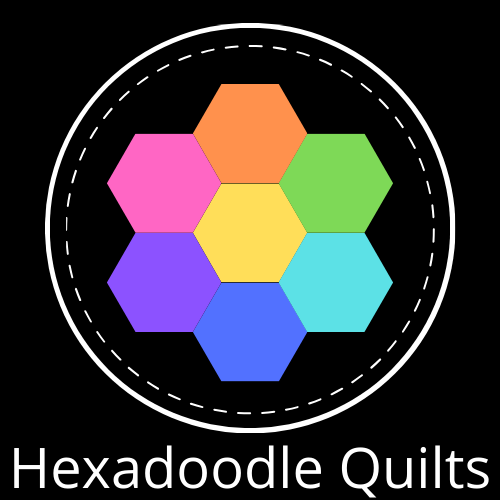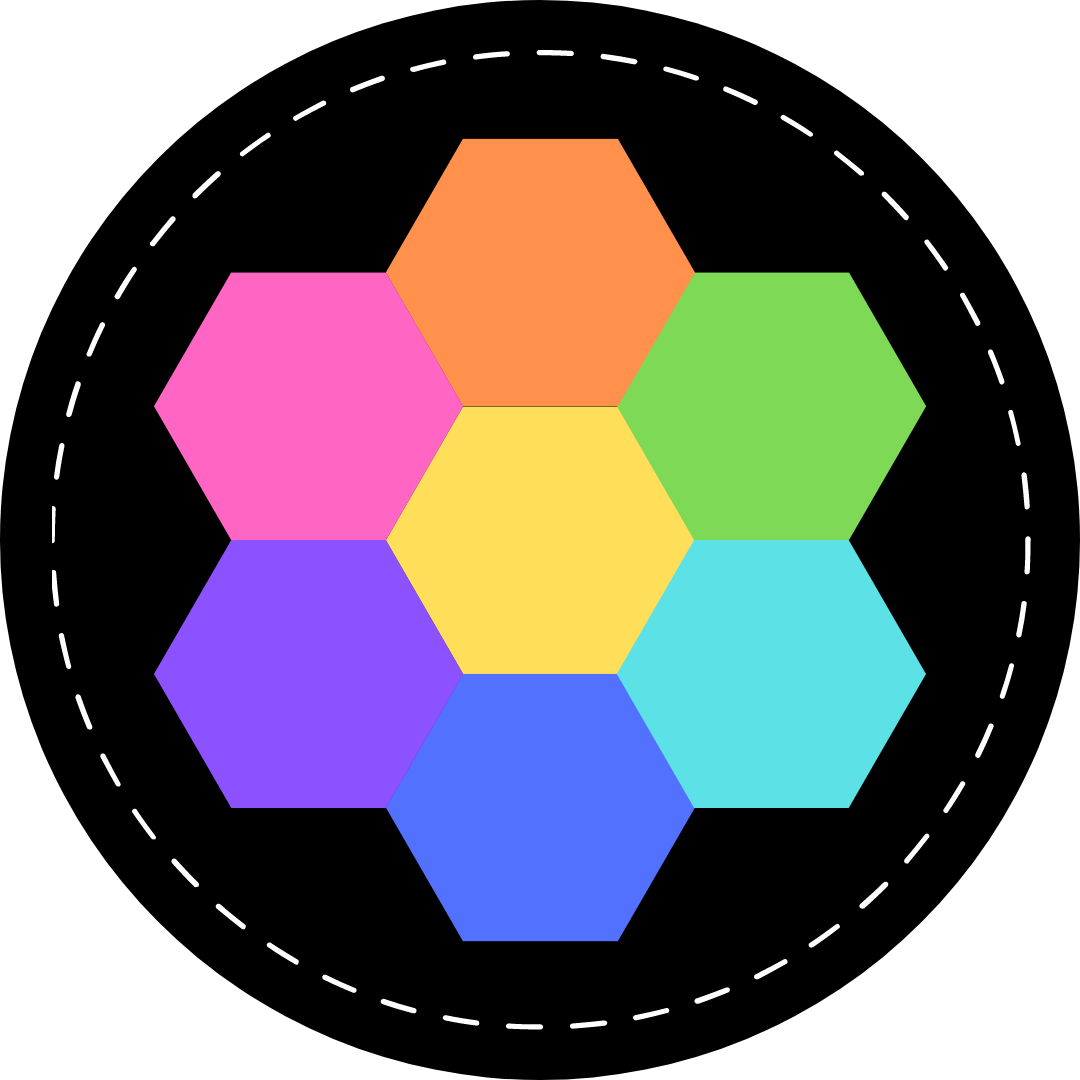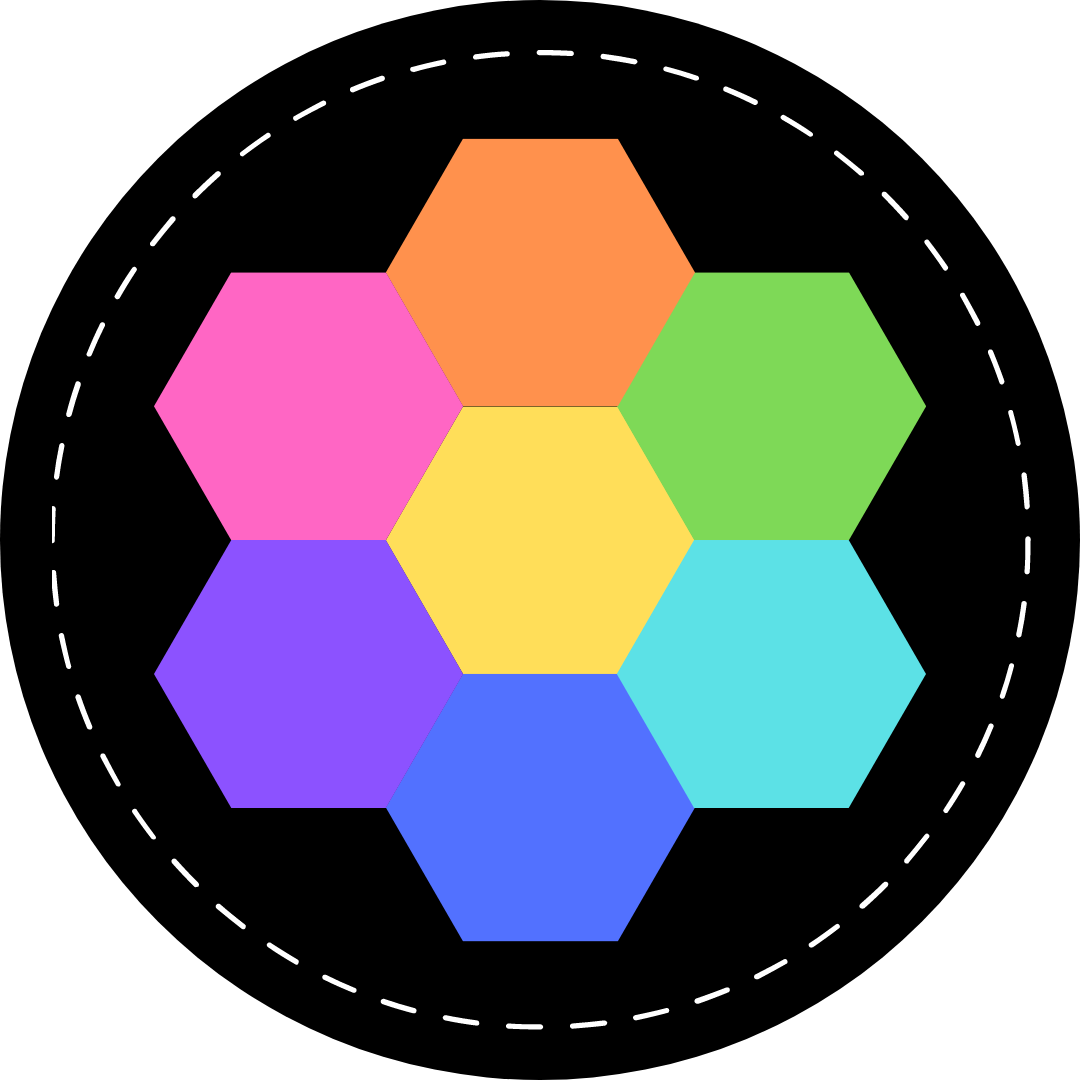The first thing I would like to say about EPP Tools and materials is, to start with what you have. If you have nothing at all, then start with the best that you can afford.
This craft has been practiced for hundreds of years using only the most basic tools and equipment.
It is very easy to get caught up in the fervor of the latest quilting gadget or gizmo to be released which promises to revolutionise the way that you sew.
My sewing room is littered with them - but I always return to the same basic tools
Basic Tools & Materials
PAPERS
As the name suggests, English Paper Piecing uses paper templates to provide shape and stability to our fabrics so they can be sewn together.
The most important thing about your paper templates is that they be ACCURATE and CONSISTENT. They should be made of a material that is firm enough for you to wrap your fabrics around them without distorting the template.
All of my patterns include digitally drawn templates for you to print and cut at home. For hints and tips on making your own paper templates head to my tutorial Three ways to make paper templates at home (to be published soon)
There are a number of very reputable firms mass producing paper templates such as PaperPieces
** Be sure to buy your papers for a single project from the same source - if you start a project using 1" hexagons from PaperPieces and need to get more, get them from PaperPieces again. There can sometimes be tiny differences in the finished sizes between the different manufacturers **
PINS AND NEEDLES
There are 100s of different needle variations available out there and choosing the wrong needle to work with can lead to poor results and much frustration.
I will be posting a much more comprehensive tutorial on needles at a later date but for now, here's what I use and why I use them.
I choose to use 2 different types of needle for my English Paper Piecing: I use a Sharps Needle for basting my fabrics to my papers and a Milliners (or Straw) Needle for sewing my shapes together.
Sharps Needles
A sharps needle is a medium length needle that as the name suggests is very sharp! It is the most common of all hand sewing needles and as such, is readily available in most sewing and quilt shops. They have a short round eye which makes them easy to thread.
As they are a shorter length and not as fine, I find they do not bend under the pressure of the paper and they pierce my papers with ease making thread basting one of my favourite parts of the EPP process.
The size I use most often for thread basting is a size 8 or 9 Sharp
Milliners/ Straw Needles
As the name might suggest, Milliners needles are traditionally used in hat making. (They are sometimes referred to as Straw Needles because so many hats used to be made of straw!) They are a long needle with a round eye and this makes them quite easy to thread - as I get older, this is becoming more and more important to me!
I like the longer length of a milliners needle, it bends slightly in my hand and I feel I have more control over the point of the needle and am therefore able to take the smaller stitches necessary when sewing my pieces together.
My preferred needle for sewing pieces together is size 10 or 11 Milliners
***
My main piece of advice would be that if you decide to buy only one type of needle, invest in a good quality SHARPS needle. My favourite needles are made by John James and Tulip.
Finding the right needle for you may take some trial and error, but starting out with a packet of mixed sizes would be a great option.
Worth Remembering
Hand sewing needles are numbered differently to Machine sewing needles
For hand sewing needles, the higher the number, the finer the needle - a size 5 needle is bigger than a size 10 needle
THREAD
When I first started english paper piecing, I used whatever thread I had on hand.
This is still pretty much the case today but over the years I have added to my extensive thread collection and a number of factors have influenced my buying decisions. I still use a variety of threads in my work, but my choice of which thread I use is now determined by a number of factors. I will go into this in more depth in a later blog post.
I try to match the colour of my thread to the fabrics that I am stitching. If I am stitching a dark piece to a lighter piece, I favour using a thread coloured to match the darker piece.
The threads I use most often are:
- Gütermann Sew-All Cotton Thread (basting, piecing and appliqué)
- Maison Sajou Fils au Chinois (piecing and appliqué)
- Wonderfil DecoBob (piecing and appliqué)
If you are just starting out, I recommend using a 50 weight 100% cotton sewing thread which is readily available at most sewing and quilting stores.
Scissors
Throughout your EPP journey, you will be cutting papers, template plastic, fabric and thread. For this reason, I recommend having at least 3 pairs of scissors:
A pair for cutting paper and plastic, a pair for cutting fabric and another smaller pair for cutting threads.
As with all things, buy the best you can afford. I'm still using the very first pair of fabric scissors that I purchased way back in 2004 when I first started sewing. They were nothing special - just a pair of fabric shears from my local hobby chain store. I did buy another pair of fabric shears recently as I thought I'd lost my original pair but again, these were less than £30. (I tend to use a rotary cutter more these days than scissors).
I keep these scissors AWAY from my family and tied a piece of fabric to the handles to remind them that they are for fabric ONLY
For my plastic/ paper scissors, I just bought a set of cheap utility scissors from everyone's favourite Swedish home ware store and kept the largest pair of scissors for my sewing room. The others went in the kitchen drawer.
Confession Time: I own way too many pairs of embroidery scissors! Over the years I have collected over a dozen pairs! I like to make up little travel EPP kits and project boxes and aim to have a pair in with each project so I can just grab and go knowing that I have everything I need with me.
My most beloved pair of scissors are my stork embroidery scissors which were purchased for my 40th Birthday by my husband last year. They were made by Ernest Wright - one of the few manufacturers left in the UK that hand make their scissors. Each pair is handmade in Sheffield which has a rich heritage in the production of steel products. I use these for cutting thread only!!

I had to make a purple scissor fob using my Sewing Hex-essories pattern straight away for these!
FABRIC
Ah, the best bit!
Fabric is the paint with which we create our EPP masterpieces!
The best fabrics for paper piecing have a firm, even weave and crease well. 100% cotton fabrics are best for your first few projects. Not all fabrics are created equal however, and it is important to use the right fabrics when you are getting started with English Paper Piecing.
From personal experience, I have learned that not all 100% cotton fabrics are ideal for English Paper Piecing
Avoid using Cotton Poplin fabrics - although cheaper than quilting cottons, I have found the weave can be too tight and it makes for a hard time stitching your pieces together.
Visit your local quilt shop (LQS) and ask for advice if you are not sure.
My favourite fabric size to purchase is called a Fat Quarter. Depending on where you are in the world, a fat quarter should measure at least 18" wide by 20" tall. This means that you can purchase 4 different fabrics for the roughly same price as a single yard or metre of fabric.
If you want a lot of variety in your EPP quilt, I highly recommend using pre-cut fabrics. They come in a range of sizes including 2.5" squares (perfect for 1" hexagons), 5" squares, 10" squares and have delightful names such as Candy squares, Charm Packs and Layer Cakes

FINALLY,
Give yourself permission to Learn and Grow
As you continue on your English Paper Piecing journey, you will begin to notice the areas that you would like to improve upon or change and this will be the time to start experimenting and investing in different tools and materials.
The only right way to English Paper Piece is the way that works for YOU!





Comments ()